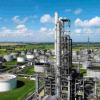Hello everyone, this is my first post.
I work as a process engineer for a company that design and build towers and equipments for ethanol distillation.
During our columns design, we often use process simulators (Aspen Plus) to simulate the flowrate of steam to send in the reboiler to obtain no more than 250 PPM w/w of ethanol in the bottom of the column and at the same time, about 95% w/w of ethanol on the top.
My problem is that Aspen Plus predict too optimistic values for the flowrate (about only 160 kg of steam every 100 liters of ethanol feeded in the column), even when rate-based calculation is used. Murprhee efficiency predicted by Aspen is in 0.55-0.7 range. Column works at atmospheric pressure on top.
I talked with many experts and colleagues with a lot of experience in this field and all of them agree that the correct flowrate of steam could be on 190-230 kg of steam every 100 liters of ethanol feeded in the column to reach that desidered purity on the bottom.
To reach that values I need to manually reduce murprhee efficiency at values low as 0.4 or less and switch to equilibrium model, that value of efficiency seems very low to me (using NRTL or UNIQUAC as thermodinamic model doesn't change the result).
Could it be that I made something wrong? Could the murpree efficiency be so low for distillation of ethanol?
I'd like to know from the experts of this forum, if the values predicted by Aspen are reasonable and so my colleagues think in a bit "conservative" way, or the murphree efficiency is really so low.
Thanks in advance for everyone who would like to answer me.

 FB
FB









